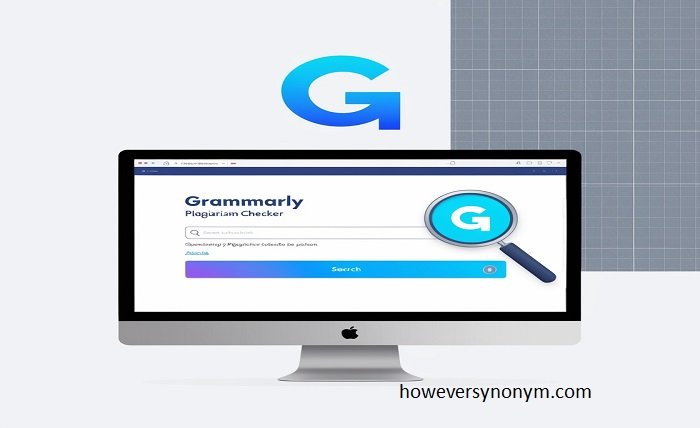Introduction
Keeping material original is essential in the digital age we live in, when content is produced and disseminated at a never-before-seen pace. It is crucial to produce original and grammarly plagiarism checker-free work whether you are a student, professional writer, or content provider. Plagiarism checkers can assist you make sure that your work is authentic in this situation. Grammarly’s Plagiarism Checker is one of the many tools that is a dependable and effective choice. This blog post will provide you a thorough grasp of how to make the most of Grammarly’s Plagiarism Checker by delving deeply into its features, advantages, and possible disadvantages.
What is Grammarly Plagiarism Checker
The grammarly plagiarism checker suite of tools, which includes the Plagiarism Checker, is a crucial component that enables users to verify the uniqueness of their material. Grammarly’s Plagiarism Checker offers a dependable way to identify and stop plagiarism, whether you’re a student working on an academic paper, a professional authoring critical papers, or a content creator hoping to publish online. The tool scans your paper and compares it to a huge database that contains billions of published works, scholarly publications, and web sites. Any content that matches is marked, giving you the opportunity to check for possible problems and make the required corrections.
How Does Grammarly Plagiarism Checker Work
grammarly plagiarism checker’s Plagiarism Checker operates using advanced algorithms that scrutinize your text for any signs of plagiarism. When you submit your document, the tool scans it and compares the content against an extensive database, which includes billions of online pages and a vast repository of academic works. The checker analyzes the text for direct matches, as well as more subtle similarities like paraphrasing, ensuring that even cleverly disguised plagiarism is detected. Once the scan is complete, Grammarly provides a detailed report highlighting any flagged passages along with links to the original sources.
Benefits of Using Grammarly Plagiarism Checker
With so many advantages, grammarly plagiarism checker Plagiarism Checker is an invaluable resource for writers who want to stay true to their original work. Primarily, it safeguards academic and professional integrity by identifying and assisting in the removal of plagiarism, an essential function for professionals, educators, and students alike. Additionally, the program saves a ton of time by automating the tedious and time-consuming process of checking for duplicate content. Furthermore, Grammarly improves the overall caliber of your writing by offering style, grammar, and punctuation recommendations, resulting in work that is polished and unique.
Limitations of Grammarly Plagiarism Checker
The grammarly plagiarism checker is an effective tool, however it has certain drawbacks. One of the primary disadvantages is that it is exclusively accessible to premium customers; individuals utilizing Grammarly’s free edition will have to hunt for substitute plagiarism detection programs or think about upgrading. The tool’s reliance on a dependable internet connection is another drawback. In order to compare your content with its large database, it needs online access. Furthermore, even though Grammarly is a very accurate tool, there is always a chance that popular terms or terminology could be mistakenly reported as plagiarism due to false positives.
How to Use Grammarly Plagiarism Checker
Even non-techies can use grammarly plagiarism checker’s plagiarism checker because it is an easy-to-use interface. Initially, users must create a Grammarly account; to utilize the Plagiarism Checker, they can choose to upgrade to a premium membership. After logging in, you have the option to paste your content directly into the Grammarly interface or upload your document. The program is handy and adaptable since it supports a number of file formats, including doc, docx, txt, and pdf. Just select the “Plagiarism” option after uploading, and Grammarly will start analyzing your content. The application produces a report quickly that includes links to the original sources and flags any possible instances of plagiarism.
Grammarly Plagiarism Checker vs. Other Tools
The grammarly plagiarism checker from Grammarly differs significantly from other comparable programs in a few important ways. One popular plagiarism detector in academic settings is Turnitin, which is well-known for integrating with learning management systems. Grammarly provides a wider range of capabilities, such as grammar and style checks, making it a more versatile tool for general writing needs, whereas Turnitin shines in academic situations. Comparably, Copyscape is another well-liked application, particularly for those who create web material, although its main function is to identify duplicate content on the internet. However, Grammarly examines a wider range of sources, including scholarly articles.
Conclusion
The grammarly plagiarism checker on Grammarly is an effective tool for making sure your writing is original and honest. For professionals, learners, and content producers alike, it provides a comprehensive solution with its vast database, sophisticated detection algorithms, and easy-to-use interface. For individuals in need of a trustworthy and effective plagiarism detector, the advantages greatly exceed the disadvantages, even though it has certain restrictions such as cost and need on an internet connection.
FAQ
Is grammarly plagiarism checker free?
No, only Grammarly Premium users have access to the plagiarism checker. Grammarly’s free edition analyzes your grammar and spelling, but you’ll need to subscribe to use the plagiarism detection tool.
How accurate is grammarly plagiarism checker?
Grammarly’s huge and constantly updated database makes its plagiarism . read about more le turf du boss But since no plagiarism detector is 100% accurate, it’s wise to thoroughly examine any content that has been highlighted.
Can grammarly plagiarism checker detect paraphrased content?
Yes, Grammarly can identify content that has been paraphrased by looking at the text’s structure, syntax, and semantics. However, depending on how skillfully the information is reworded, the accuracy of paraphrase detection may change.

